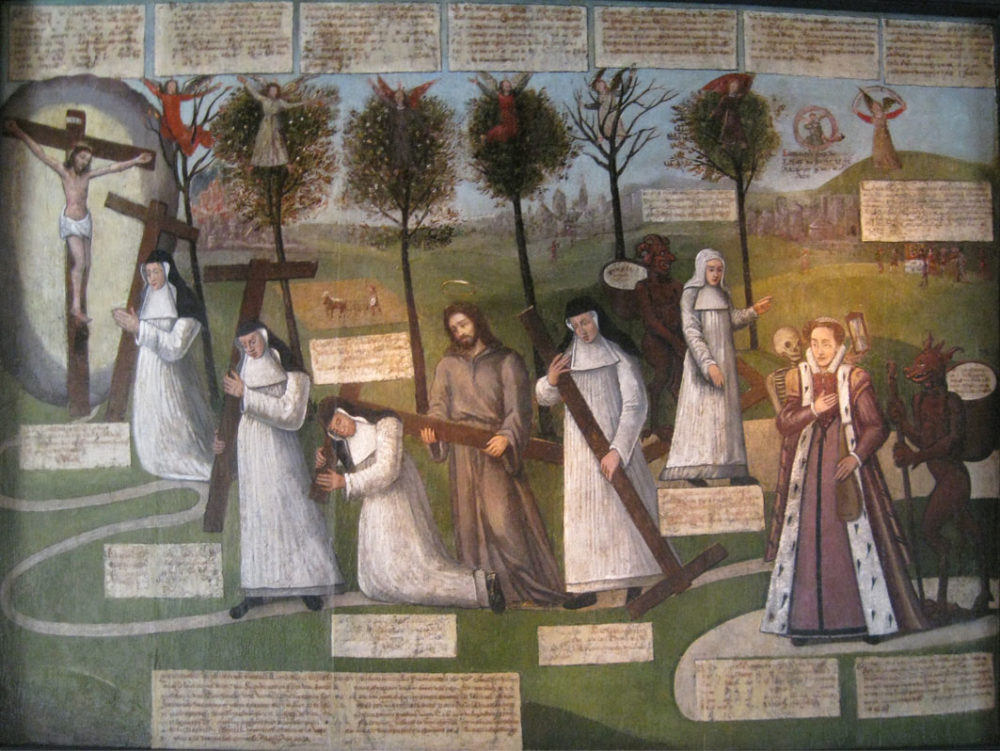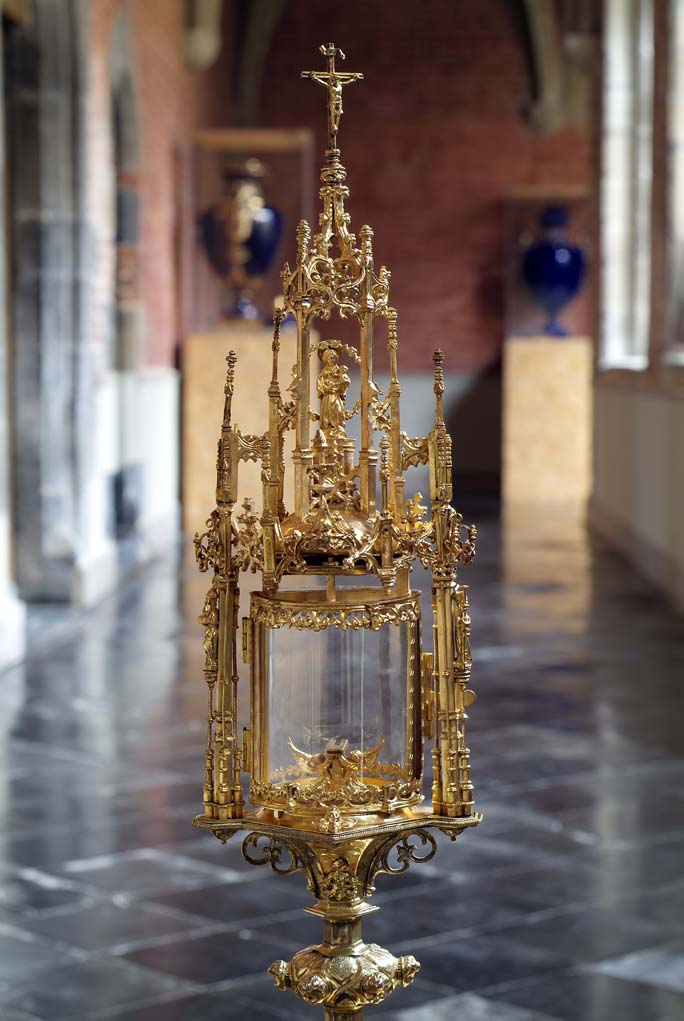The originality and interest of the collections of the Hospital Notre-Dame à la Rose lies in their variety and quality. Indeed, they illustrate many areas of the history of art and science. Moreover, they are preserved in situ and contribute very largely to recreate an atmosphere, peculiar to this place where time seems to have stopped. Many links can be highlighted between the objects presented today to visitors and the daily life or major events experienced by those who made and wrote the history of Notre-Dame à la Rose .
The art collections contain several thousand pieces. They include Gothic and Renaissance furniture as well as Regency or Baroque woodwork. The credenzas and the Gothic benches are unique in Belgium.


The paintings on wood or on canvas (15th to 20th century) are of high quality and we can cite, for example, the allegory of religious life, extraordinary anonymous painting of the 16th century or the cycle of 14 paintings of the large refectory of the community as well as the Madonna and Child of Monseigneur’s apartment. Finally, how not to speak of the surprising Christ with breasts or Lamentation of Christ rediscovered during the preparation of the exhibition “The enclosed garden”. The statuary is not left behind with a Virgin with the child of the 14th and a pieta of the 15th century.
The treasure of civil and religious silverware, rich of more than forty pieces, further reinforces the interest of the artistic collections of the Hospital Notre-Dame à la Rose. All this without mentioning laces, brass, pewter, porcelain, crystals and fabrics.
It is interesting to note the way in which the collection has gradually been formed. Most items are gifts and donations of the sisters themselves or of their family, given to the community when young girls entered religion at the Hospital to serve God and the sick. At times, prioresses from wealthy families also donated some of their heritage to the hospital, or commissioned paintings by renowned artists or pieces of silverware. These collections are an extraordinary testimony, a superb illustration of the life of the community that occupied the Hospital of Lessines for nearly 750 years.

